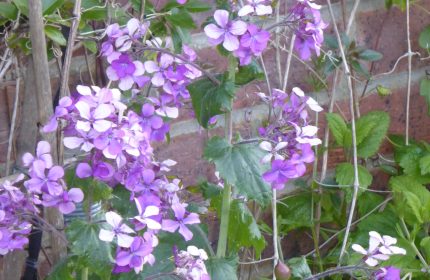A thorny issue
This spring has seen the UK’s hedgerows dressed in an unprecedented white harvest of hawthorn flowers. Liam Creedon reveals why this shrub and other native plants will transform your garden into a wildlife haven.
It is at this time of the year that one of the most unassuming stars of the British countryside briefly emerges from the shadows to cast a white and wonderful spell over the landscape.
Typically, Hawthorn plays the part of the countryside’s unobtrusive backing singer, giving way to the gaudy attention-grabbing Bluebells, Daffodils and Ox-eye daisies that form the essential and unavoidably showy ingredients of springtime.
But at some indefinable point in May, when the days get long enough and the weather heats up, the Hawthorn begins to bloom.
Overnight, it appears as though an impossibly late snow has fallen. Hedgerows are awash with florid, pinkish white blooms as the Hawthorn – or May Tree as it has long been known – puts on its show-stopping display.
This year’s mild winter has seen May buds burst forth with abandon with the white wall of blooms creeping across the countryside.
Today, Hawthorn is viewed by many as little more than an instantly forgettable scrub, but the May Tree has historically enjoyed a reputation as one of our most revered and mysterious native species.
It was believed that monumental bad luck would befall anyone foolish enough to bring Hawthorn sprigs inside the home – an action that superstition held could augur the death of a relative.
The plant’s dubious reputation may stem from its scent; the suffocating, bitter-sweet aroma overpowers everything in its path and has been likened to the smell of putrid flesh.
Once first noticed, Hawthorn seems to be everywhere. The Enclosure Act of 1845 is responsible for this ubiquity, since when it is planted in rows, the tree grows into an impenetrable field boundary – just the thing needed to enclose open and rambling land. In fact, more than 200,000 miles of May Tree were planted as a result of the Act.
But this huge hawthorn network has proved a vital boost to our wildlife. Hawthorn provides a key habitat for many insects, birds and mammals.
Woodland Trust citizen science manager Kate Lewthwaite explains: “Hawthorn is a fantastic species that supports a wide variety of insects, birds and animals. Its dense, thorny foliage is perfect for nesting birds, and the flowers are a brilliant source of food for mammals such as dormice. Bees and pollinating insects will also appreciate the pollen and nectar from the flowers.”
The charity Plantlife is encouraging wildlife-loving gardeners to go native and plant British species like Hawthorn in their gardens.
Despite being a species associated with the open countryside, Hawthorn’s thorny stems make it an ideal boundary hedge. Trained as a hedge it will reach between 1.5 and 3m in height. Grown as a formal hedge, it will need to be pruned twice a year. Grown as an informal hedge, the only pruning needed is the removal of the most vigorous shoots in winter.
By going native, gardeners can bring wild colour into their gardens and provide a home for wildlife while helping to support some of our most threatened native species.
Plantlife’s botanical specialist Dr Trevor Dines explains: “Many of our garden favourites, like Box, Pasqueflower and Welsh Poppy are also some of our rarest native plants. It always amazes me that you can pop into almost any garden centre, DIY shop or nursery in the country and by a plant of Shrubby Cinquefoil, but this same species is a beautiful native wildflower restricted to just two small areas in Britain.
“Plantlife’s Wildflower Garden aims to celebrate the native flowers we probably already grow, introduce a few new ones and discover the fascinating stories behind them as British wild flowers; did you know for example that, according to legend, Pasqueflower grows from the blood of buried Viking warriors?
“You don’t need to let your garden become overgrown and tatty to enjoy them; wild plants and flowers can be woven into the tapestry of all garden styles, from cottage to formal.”
The UK’s wildflowers are in real trouble. Wild native flowers are being lost at a rate of up to nearly one species per year per county and the rate of loss is accelerating.
Today only 2% of the flower meadows that were here in the 1930s remain. When wild flowers disappear, so does the wildlife that relies on them.
Plantlife hope that by encouraging gardeners to plant native wildflowers, the public will pay closer attention to their dramatic loss in the wider countryside.
:: For more information about going native in your garden visit www.plantlife.org.uk
Latest posts by Sally - Silversurfer's Editor (see all)
- How to keep your tulips lasting longer - April 25, 2024
- Do you sleep with a snorer? - April 25, 2024
- Holiday hack: How to win a GHA DISCOVERY Titanium status upgrade - April 23, 2024
- 10 Money saving tips for gardeners - April 21, 2024
- Should smacking a child be banned in England and Northern Ireland? - April 17, 2024






















